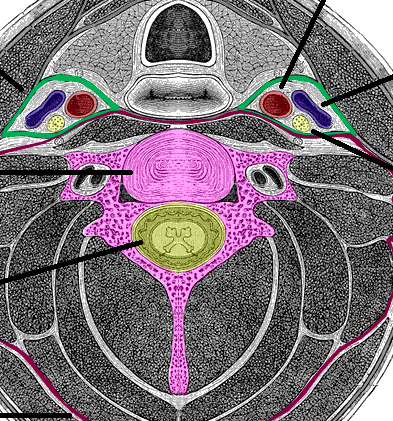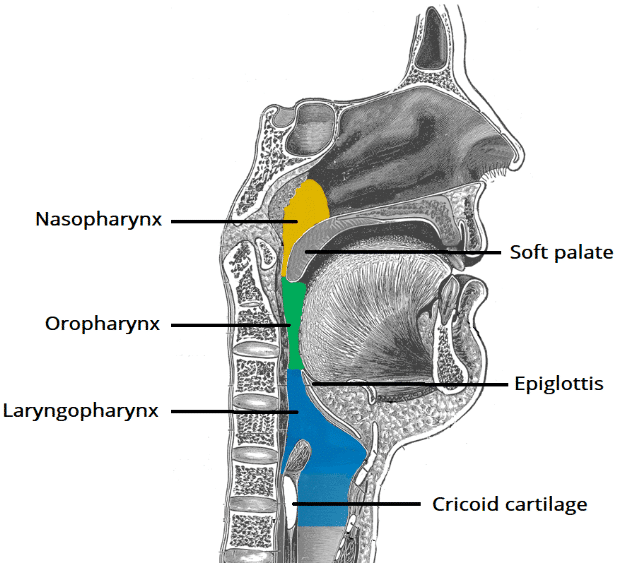- Core Concepts
- Peri-Operative Care
- Examinations
- General
- HPB
- Vascular
- Urology
- Orthopaedics
- Breast
- ENT
- Neurosurgery
- Plastics
- Cardiothoracics
- Transplant
- Consent
Throat
format_list_bulletedAbout this section add remove
The pharynx is a muscular tube that connects the oral and nasal cavity to the larynx and oesophagus, starting at the base of the skull and extending to the inferior border of the cricoid cartilage (C6). The pharynx is comprised of three parts (superior to inferior), termed the nasopharynx, the oropharynx, and laryngopharynx.
The main conditions that ENT surgeons are involved with associated with the throat are tonsillitis and obstructive sleep apnoea. Tonsillitis is treated conservatively, unless significant attempts occur each year then tonsillectomy is indicated. Obstructive sleep apnoea should be treated with non-pharmacological interventions primarily, continuous positive airway pressure (CPAP) as the first line treatment




